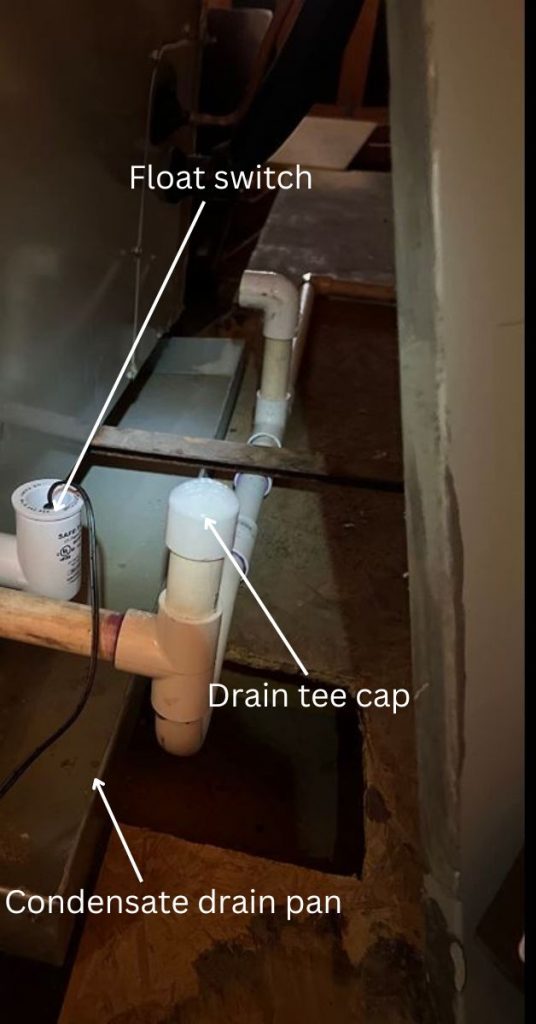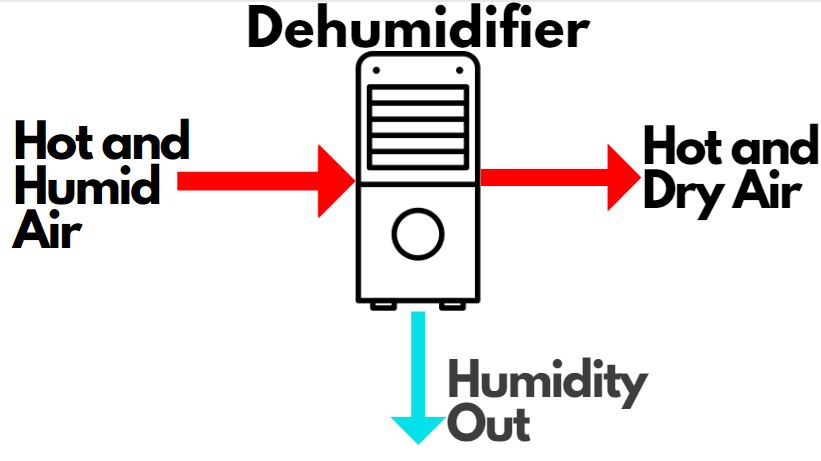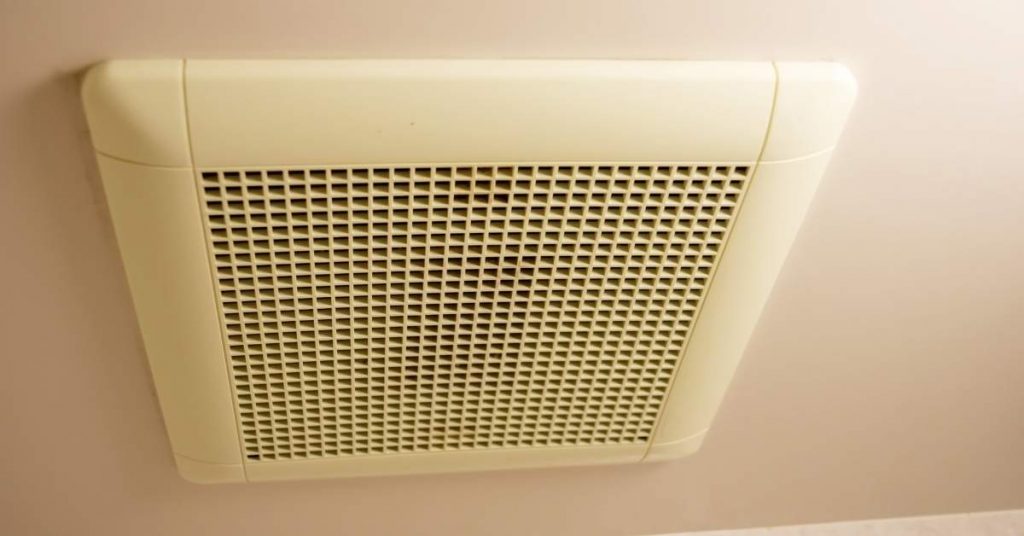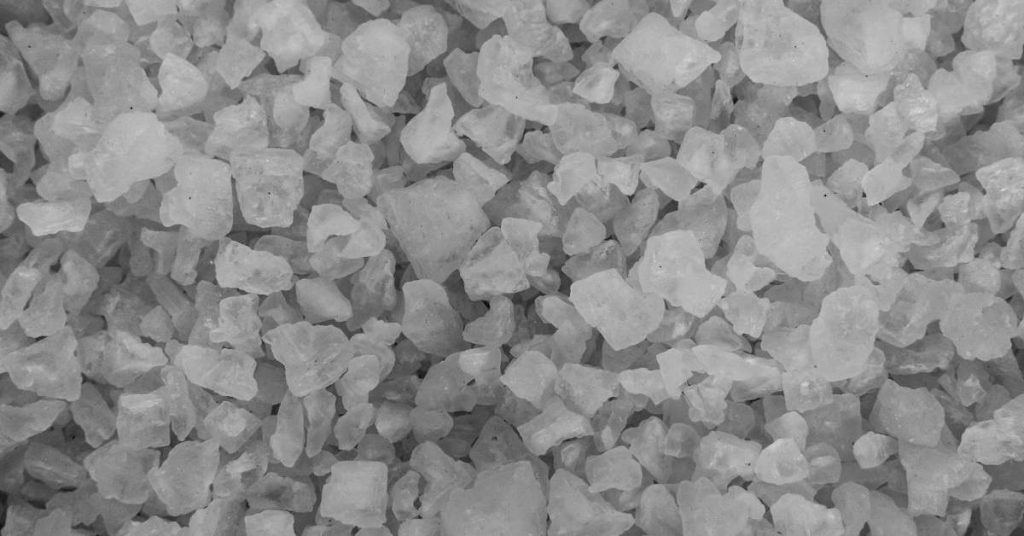
Reducing indoor humidity is essential for maintaining comfort and preventing issues like mold growth and structural damage. Here’s a summary of various ways to reduce indoor humidity:
- Use a Dehumidifier: Dehumidifiers are effective devices that remove excess moisture from the air. Portable models can be used in specific rooms, while whole-house dehumidifiers provide comprehensive coverage.
- Ventilation: Ensure proper ventilation by regularly opening windows and doors to allow moisture-laden air to escape and fresh, dry air to enter. Use exhaust fans in kitchens and bathrooms.
- Air Conditioning: Air conditioning not only cools the air but also dehumidifies it. Ensure your AC unit is properly maintained and sized for your space to maximize its dehumidifying capacity.
- Fans: Ceiling fans and box fans help improve air circulation, which can reduce humidity by evenly distributing the moisture in the air.
- Seal Leaks: Inspect your home for leaks in the roof, walls, windows, and doors, and repair them promptly to prevent moisture from entering.
- Use a Hygrometer: Invest in a hygrometer to monitor humidity levels in your home and take appropriate actions when levels are too high.
- Fix Plumbing Issues: Address any plumbing leaks or drips promptly to prevent the introduction of moisture into your indoor environment.
- Limit Indoor Plant Watering: Be cautious not to overwater indoor plants, as they release moisture into the air. Adjust your watering schedule as needed.
- Reduce Cooking Steam: Use exhaust fans and lids on pots and pans while cooking to minimize the release of moisture into the air.
- Dry Clothes Outdoors: Whenever possible, hang wet clothes or use a clothesline outside to prevent indoor humidity from rising due to drying laundry indoors.
- Weatherproof Windows and Doors: Seal gaps and apply weatherstripping to doors and windows to prevent outdoor moisture from entering your home.
- Keep Showers Brief: Taking shorter, cooler showers can help reduce the amount of steam and moisture introduced into your bathroom.
- Use Sealable Food Containers: Sealable containers for food storage can help prevent the release of moisture from food items into your kitchen.
- Limit Aquarium Size: If you have an aquarium, consider a smaller tank or cover it to reduce evaporation and moisture release.
- Basement Waterproofing: Basements are prone to high humidity. Waterproof your basement, improve drainage, and use a dehumidifier to control moisture.
How to Reduce Humidity in Your House
As I have mentioned, the best ways to reduce humidity in the house is by using an air conditioner and/or a humidifier. However, there are other natural ways of reducing humidity as I will outline in the post.
Let us look at the various methods of lowering the moisture/humidity in the house one by one:
1. Use an Air Conditioner
Air conditioners are primarily designed to cool the house but they also come in handy in reducing humidity as I wrote in this post. Central air conditioners and mini-splits are more effective in lowering humidity than window and portable ACs.
As you know, air conditioners have a cooing coil (evaporator coil) and a condenser coil. The cooling coil is located inside the house while the condenser coil is located outside, alongside the compressor.
Cooling happens inside the house, specifically on the cooling coil’s surface. When the blower fan pulls warm and humid air from the house and it comes into contact with the coil, the refrigerant (Freon) absorbs heat from the air.

As the air is cooled, its potential to hold water reduces. As such, the moisture in the air (humidity) condenses on the coil and drips on the condensate drip pan located under the evaporator coil.
From the drip pan the water is removed to the outside of the house by the air conditioner drain line. And that is how an air conditioner reduces humidity.
2. Set the AC Fan to AUTO
A lot of people make the mistake of running their HVAC fan on the “ON” position instead of the “AUTO” setting. That alone can have an effect on how well your air conditioner is able to reduce humidity.
So, what difference does it make having the HVAC fan on “AUTO” instead of the “ON” setting?
When the fan is set to the “ON” setting, it cycles throughout while in the “AUTO” position it only cycles when the AC is running then turns off when the thermostat turns the AC off.
Having the fan continuously cycling warm air through the system does not give the condensate (on the surface of the coil) time to drip off and drain away. Instead, the condensate evaporates and is cycled back to the house hence humidity does not reduce.
However, when the fan turns off in between cooling cycles, the condensate drips off the evaporator coil and is drained out of the house.
That is why you should set your HVAC fan to “AUTO”.
3. Size the Air Conditioner Properly
A small air conditioner is not good but neither is big one. Big air conditioners may be good for cooling but are awful when it comes to reducing humidity in the house.
In order to reduce humidity in the house, the air conditioner needs to run for a long time. That allows the indoor air to pass through the evaporator coil multiple times, where the moisture in it is removed.
A big air conditioner only runs for a short time and then it turns off. While the thermostat will indicate that the inside temperature is low, the humidity will be quite high.
So, what size of air conditioner do you need? Use the guide below:
- 4,000 BTU – 100-200 sq. ft. ,
- 6,000 BTU – 200-300 sq. ft.
- 8,000 BTU – 300-400 sq. ft.
- 10,000 BTU – 400-500 sq. ft.
- 12,000 BTU – 500-600 sq. ft.
- 14,000 BTU – 600-700 sq. ft.
- 16,000 BTU – 700-800 sq. ft.
- 18,000 BTU – 800-900 sq. ft.
- 20,000 BTU – 900-1,000 sq. ft.
- 24,000 BTU – 1,000-1,200 sq. ft.
So, what if you have an oversized air conditioner? If you have an oversized air conditioner and buying a new one is not an option, you may need to install a dehumidifier.
4. Ensure the Air Conditioner is Level
Central air conditioners have a large indoor units located somewhere in the basement, attic, crawlspace or inside a utility closet. As I mentioned, these units have a condensate drain pan where the moisture from the air drops after condensation.
It is critical that the indoor unit (and therefore the drip pan) is level/flat for water to drain out as soon as it drips in.
If the unit was not properly installed and is slanting to one side, there will always be a pool of water inside the drip pan. This water will evaporate and you will always have problems with humidity in the house.

Locate you indoor unit and check if it is installed properly. A leaking air conditioner can also contribute to high humidity in the house.
5. AC Maintenance
For an air conditioner to work properly (cooling and dehumidification), it needs to be properly maintained and by a professional HVAC technician for that matter.
The technician will:
- Check refrigerant levels
- Clean the coils
- Change air filters
- Inspect ducts for leaks
- Clean ducts
- AC tune ups
If the AC filters are dirty, the ducts are leaking or a clogged, you have a dirty evaporator coil or the fan is not working properly, warm air from the house will not reach the evaporator coil meaning that cooling will not happen as it should and moisture will not be removed from the air.
6. Use a Dehumidifier
A dehumidifier is an appliance used to remove moisture from air, thereby reducing humidity. There are whole-house dehumidifiers connected to the HVAC system and there are portable stand-alone dehumidifiers.
One question I am a frequently asked is “Do I need a dehumidifier if I have an air conditioner”? Well, it depends.
If you live in a humid areas like Florida or most parts in Texas, you need both a dehumidifier and an air conditioner. However, if you are in a desert state like Utah or Arizona you only need a good air conditioner.
Related: ACs vs dehumidifiers
An air conditioner can remove 5-20 gallons of moisture from the air in a day, reducing relative humidity from about 80% to 65%. You would then need a dehumidifier to lower the humidity further from 65% to the require 30-50% levels required.
Kindly know that a dehumidifier is not a replacement for air conditioners. While a dehumidifier will reduce humidity, it will not cool the indoor air.
Actually, dehumidifiers work very much like air conditioners. They pull air from the house and cool it to strip it off the moisture. The heat absorbed from the air is then used to heat the same air before it is released back to the house.

Do you have a situation where humidity is higher in some of your areas like the attic, basement or upper floors than other areas? A dehumidifier will come in handy. Heavily insulated attics will especially need a dehumidifier.
How to Reduce Humidity Naturally – Without Air Conditioner or Dehumidifier
There are also other was that you can naturally reduce the humidity of a room or house without the use of air conditioning or dehumidifiers.
The following are the different ways of reducing humidity with air condition and/air dehumidifiers:
1. Use Vapor Barriers in your Crawlspace
A crawlspace is the narrow space between the ground and the first floor of a building. Most crawlspaces are unfinished with a dirt floor, meaning that moisture from the ground can easily enter the house through the crawlspace.
If you are struggling with high levels of humidity and you have a crawlspace, installing a vapor barrier is a cheap and fast way of reducing the humidity.
A vapor barrier is basically a plastic cover that you put over the dirt in the crawlspace to keep away the moisture from the house. This can actually be DIYed.
2. Close Crawlspace Vents
Does your crawlspace have vents? If indeed it has, you need to make sure that those vents are closed/sealed off.
What you are trying to do is keep the moisture outside the house and having those vents open allows humidity to enter the house, meaning you will always struggle with high humidity.
Ventilation usually happens with lowering humidity buy ventilation from the crawlspace vents is not what you want.
3. Fix Leaks

If you have water leaking from your plumbing and pooling somewhere inside the house, it goes without saying that you will struggle with high levels of humidity.
Is your sink dripping water on the floor? Or do you have a leaking toilet? Prioritizing fixing leaks will help you deal with humidity.
Another thing you can do is properly landscaping (outside your house) to make sure that there are no pools of water, water is not flowing back and seeping inside the house and that run-off is being channeled away from the house.
4. Take Cold or Quick Showers
This will work for some people but for others I am sure it is a luxury they can’t afford to do away with.
Showering introduces humidity in the house, especially when showering with hot water. That is why you will notice condensation on the bathroom window after taking a shower.
Taking quick and cold showers will prevent having moisture in the bathroom air, which is key in controlling your indoor humidity.
If taking cold or rushed showers (meaning no soaking in the tub) is not an option for you, I would recommend exploring other ways of reducing humidity.
5. Use Exhaust Fans

Your bathroom and kitchen will be fitted with exhaust/ventilation fans. When doing any of the activities there (bathing or cooking) there is a lot of moisture generated which increases the overall humidity in the house.
Running your exhaust fans helps to pull the humid air out of the house and that is how they help to lower humidity.
While some folks run exhaust fans after cooking or showering, I would recommend starting them before you start these activities and letting them run a little longer after you have finished cooking and showering.
6. Dry Your Laundry Outside
I personally don’t like this method as I believe it affects the aesthetics of the neighborhood but it can really help to reduce humidity in the house.
During winter, it is alright to dry your clothes indoor since high humidity is not a major concern. However, in the hot months of summer wet clothes will increase the indoor humidity and that is why drying them outside works.
A retractable clothes line is better than permanent lines which are quite an eyesore. You should however first check if line-drying your laundry is restricted by your neighborhood bylaws.
If you have to dry your laundry indoors during the summer, you will really need to have a dehumidifier to deal with the humidity.
7. Open a Window
As I mentioned, the idea is to keep the humidity indoors low and high outside but sometimes you need to allow in air from outside. Keeping the air moving is better than having stagnant air in the house.
This especially works well if there is a window in the path of wind, meaning that more air will be brought inside the house, like when you are driving a car with the window rolled down.
You however down don’t need to open the window for a long time especially if you are running the air conditioner. It will cost more to keep heating air from outside.
You can open the window for some time then close it or even open it just a crack. For better results, open windows in humid areas of the house like the kitchen or bathrooms.
8. Use Ceiling Fans
Just like opening a window, ceiling fans keep the indoor in motion. Ceiling fans circulate air from top to bottom and between different areas of your house which help to lower the relative humidity.
Stand-alone fans are also as effective as ceiling fans. The good thing with this fans is that you can take them with you in every part of the house.
9. Check Underneath Rugs
Do you have a rug on a concrete floor? Rugs can absorb and trap moisture from the ground, and they become a perfect bleeding ground for mold/algae.
It is always a good idea to use rugs which can easily be taken out, washed and dried.
Although an expensive undertaking, you may need to install vapor barriers on concrete and then covering it with a sub-floor to prevent moisture from seeping up to your carpet and rugs.
10. Use Charcoal Briquettes

Charcoal has been used for refrigeration for a long time due to its ability to absorb moisture. And you can use it too to remove moisture from your house.
This is actually quite cheap but it may affect your home aesthetics. Put some charcoal briquettes in a basket and place it where you want to remove humidity. The charcoal will keep absorbing moisture from the air and all you have to do is replace the charcoal 2-3 months later.
11. Use a Rock Salt Dehumidifier

Rock salt is a highly hygroscopic material (absorbs water from the air) and is cheap, non-toxic and does not need electricity to work. To make your own rock-salt dehumidifier, you will need 2 stackable buckets and the rock salt.
- Drill tiny holes at the bottom of one bucket
- Place the bucket with the holes inside the other bucket
- Add rock salt inside the top bucket
- Place the rock salt dehumidifier when you want to lower the humidity.
Wrap Up
And basically those are the different ways to reduce humidity with air conditioners and dehumidifiers as well as naturally. I hope that you enjoyed reading this post.





